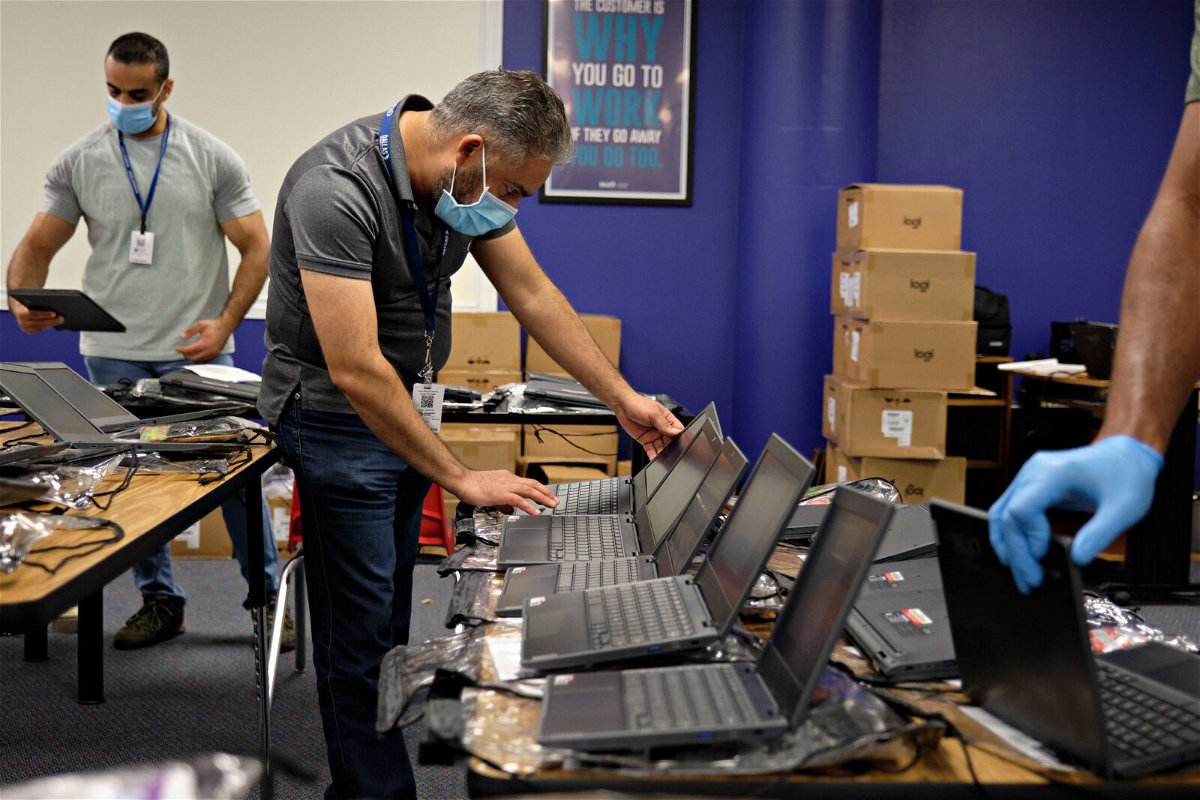Almost three years ago, we told you about Dallas ISD’s innovative plan for students to access high-speed internet access at home by creating a private wireless network. The $4.5 million project was piloted at Lincoln, Spruce, South Oak Cliff, Pinkston and Roosevelt high schools.
Today, the plan is no longer viable.

“The performance was not any better than a hot spot. That’s the bottom line,” says Sean Brinkman.
He’s the chief technology officer for Dallas ISD. The district invested in 40,000 hot spots during the pandemic. The hot spots were meant to be a temporary solution. Brinkman’s predecessor Jack Kelanic (who is now chief technology officer for the Los Angeles ISD) was pushing for a permanent solution by focusing on the private wireless network.
After installing large cell towers on each of the pilot campuses, Brinkman says Dallas ISD ran a proof of concept for a year and between the “astronomical cost” and poor service, the district had to change course.
“Honestly, based on cost and performance and the changes in commercial technology, specifically 5G, we decided not to move forward building out a private network,” Brinkman says.
Prior to the pandemic, most high speed connectivity was 4G; now, it’s a 5G world. Brinkman explains that chromebooks and iPads now come with a built-in E-SIM card which basically allows the computer to act like a cell phone with a data plan.
A Chromebook with a 5G SIM card is just $20 more than a Chromebook without a card, and more importantly, according to Brinkman, these devices are more reliable than the private wireless network or hotspots.
“I can light up a kid’s computer with the same high speed connectivity that I have on my cell phone,” Brinkman says. And, the district receives a discounted rate from providers like AT&T and T-Mobile to provide internet service on these iPads and Chromebooks.
Brinkman says the cost of providing internet access at home for students who don’t have internet access already is roughly $1 million a year. For the last couple of years, Dallas ISD has used Emergency Connectivity Funding from the federal government along with other pandemic-related funding sources to pay providers for internet services. However, Brinkman says those funding sources are now drying up.
“There’s no more ECF. There’s no more ACP (Affordable connectivity program). So, looking forward, it’s going to be a challenge.”
Brinkman says students are asked at the beginning of the school year if they have problems with internet access at home, students who say ‘yes’ are given a computer with an e-sim card. Last year, the district purchased 15,000 “lines” with providers so those students without access at home can have broadband. Brinkman says they are not using all of those lines. He says the demand has dropped since the pandemic and students are back at school.

District officials say right now, about 17% of Dallas ISD students don’t have broadband at home. During the pandemic, the numbers were right around one-third of students.
“We think this is the future. The 5G technology — you can take that anywhere in the country, even out of the country, and it works,” Brinkman says.

Leave a Reply